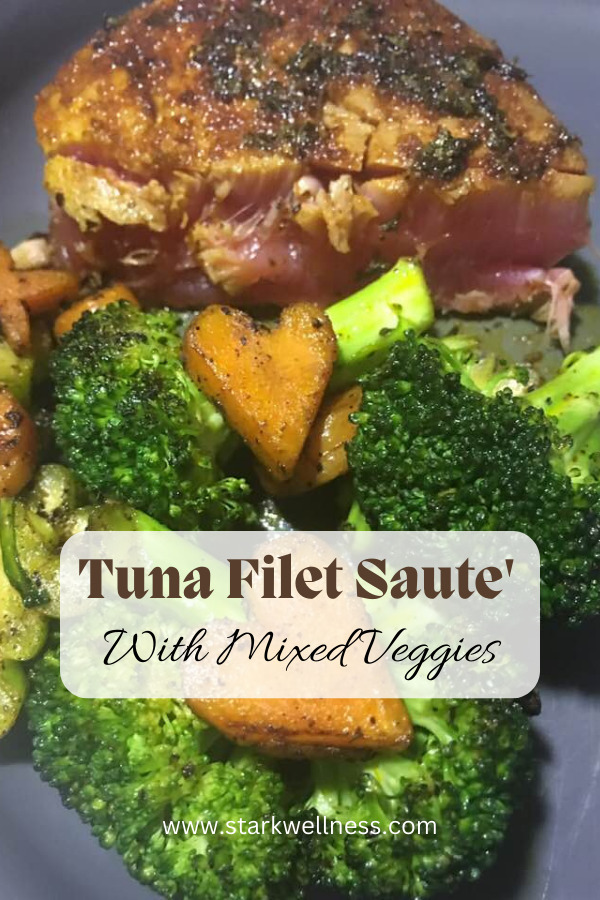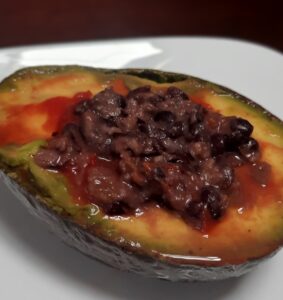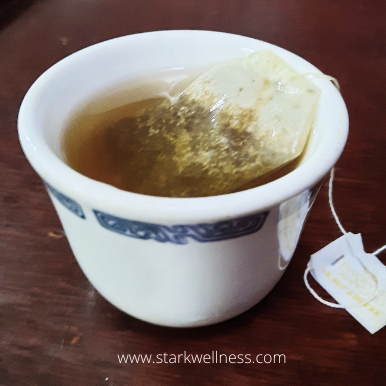What would it be like to feel more vibrant at the top of the morning?
Imagine waking up feeling healthy, motivated, confident and alert before you’ve had even a sip of coffee.
Envision yourself stepping out of bed easily, without pain or stiffness.
Imagine flowing through your day with an energetic aura of vitality….no crankiness or mid-day crashes.
Maybe you even feel five or ten years younger….
….maybe you even look five or ten years younger.
This is all possible! One secret is in reducing gut inflammation.
Do you:
- lack motivation,
- become irritated easily,
- feel tired most of the day,
- and/or do not feel restored when you wake up in the morning?
If so, it’s likely you have excessive inflammation in your gut.
You might be thinking:
“It’s my kids wearing me out!”
Or….
“My job is just so stressful, and my boss is too demanding.”
Or….
“There’s too much to do in a day, and it’s taking a toll on me”
Any of those could be absolutely true for you. I’ve said some of the same things.
What you need to realize is that those factors, and other stressors that exist in your life, can cause your body to produce excessive stress chemicals and increase inflammation in your body.
That inflammation is what’s leading to your symptoms….the lethargy, irritability, exhaustion.
So, the stressors–the root causes–definitely need to be addressed. AND you need to get a handle on your physical health. If you’re feeling those things regularly, it’s not only your emotions that have become inflamed.
Also, working on reducing excessive inflammation in your body will help you feel better and more energized. You’ll be better able to tackle some of those stressful issues in your life.
Another important note:
Gut inflammation can also result in hormone imbalances, sickness, and chronic health issues such as gut disorders, autoimmune disorders and cancer.
So let’s get started with a few simple strategies to get your gut back to balance. You can quickly start to feel more vibrant, energized, alert….and maybe even younger.

1. Try some bone broth to rebuild your gut lining and strengthen your immune system.
Grass-fed bone broth is packed with glutamine, gelatin and collagen. These are great for protecting your joints and gut lining, building antibodies, and strengthening your immune system. Glycine promotes restful sleep, and along with potassium aids the liver’s natural detoxification process, also important for reducing inflammation. One cup of bone broth provides your body with about 10 grams of protein, several different amino acids, and tons of other beneficial nutrients.
Beauty bonus benefits:
Collagen in bone broth can help tighten skin, reduce the appearance of cellulite, and strengthen your nails.
AND bone broth is so yummy! Enjoy it by itself or in a soup or stew. You could use it to cook gluten-free pasta or brown rice or to saute vegetables or meats. You can find grass-fed bone broth at your local grocery or health food store, or order it online.
Here is how I make bone broth at home:
I save good scraps from veggie trimmings in a container with a little filtered water in my fridge. The traditional vegetable parts to save for broth are carrot, celery and onion ends. But I save trimmings from any vegetables:
- broccoli, cauliflower or kale stems
- zucchini ends
- tomato cores
- bell pepper insides
- green bean trimmings
- almost ANY veggies trimmings
After cooking any chicken, pork or beef parts with bones, I save the bones. I usually plan to make bone broth the following day.
Here are instructions to make bone broth:
Fill a pot 1/2 to 2/3 full with all of the bones and some of the veggie trimmings. Save the rest of the veggies for veggie broth. Then, put about 2 tablespoons of apple cider vinegar in a jar. Use the jar to pour filtered water into the pot. Cover all of the ingredients by about 2 inches. Let the pot sit on the cold stove for 20-30 minutes to allow the vinegar to start drawing minerals out of the bones.
Next, over medium heat, bring the broth to a boil for a few minutes. Then, reduce the heat to medium-low, just enough to maintain a simmer. Prop a lid on top using a large spoon and let it simmer for 20-30 minutes more. Turn the oven off, and let it cool for at least 30 more minutes on the stove top. Finally, pour the broth through a strainer into a couple large jars. I put a little Himalayan sea salt in the bottom of each jar before filling with broth so it will mix in nicely. Of course, adding sea salt is optional.
Batching and Storing Homemade Bone Broth
Once upon a time, when I lived in a house with a deep freezer, I made huge batches of this. I would cook two whole chickens in my big oven and prepare bone broth in a tall, 2-gallon stock pot. I filled the door of our freezer with so many jars of wonderful, nutritious bone broth to use for soups, stews, brown rice or pasta dishes, veggie sautes, and soothing evening drinks for weeks.
Now, I encourage you to do that!
Living aboard a sailboat with a tiny oven and fridge keeps me limited on the quantity I can make. But it doesn’t stop me from continuing the practice. I love the nutritional benefits, the bonus beauty benefits, and the emotional well-being I feel when I drink a glass of luscious, homemade bone broth!
Not a meat lover?
No problem. Vegetable broth can offer some of these benefits as well, and it’s even more lovely to drink. You can increase your body’s own production of collagen by eating plenty of foods high in Vitamin C and antioxidants, such as almonds, cashews, spinach and mushrooms. Adding mushrooms, or the trimmed stems, to homemade veggie broth gives it a rich silkiness and wonderful earthy taste–very grounding for your soul. Red, orange or yellow bell pepper trimmings give broth a little sweetness and extra Vitamin C, which could help combat sugar cravings.
If you want to make homemade vegetable broth, follow the same steps as I detailed for making bone broth.
2. Eat more body replenishing, anti-inflammatory and mood enhancing foods to feel more vibrant all day long.
Enjoy fatty, wild-caught fish such as salmon, tuna, mackerel, and yes….sardines.
Each of these contain ample amounts of Omega 3 fats which will help lower inflammation, protect your brain, heart and joints, enhance your mobility, and stabilize, or even uplift your moods. Try to get in 2-4 servings per week.
You can print out my family’s favorite tuna recipe here, or get an entire Food-Mood Recipe Guide with the purchase of my email course RENEW. It’s loaded with tips for living a more vibrant, healthy life….and more mood boosting recipes!
Need some help practicing SELF-CARE? Check out my email course RENEW! It’s a Good Start Guide to Help You Restore Your Body and Mind. You’ll get TONS of ideas for eating, exercising, sleeping, and just taking care of yourself well….including my Food-Mood Recipe Guide! Click HERE to see why you will love it.
Try mackerel cut into chunks and skewered with onions, bell peppers, summer squash, zucchini and cherry tomatoes for amazing grilled shish-kabobs. Season with a little sea salt, black pepper, garlic powder, and cumin powder. (I like a LOT of cumin powder.)
If you’re wrinkling your face up thinking about eating sardines, give me a few seconds to make your mouth water and want to try them: For your first purchase, look for King Oscar, Wild Planet, or Crown Prince brands. Each of these include quality sardines with a variety of yummy, natural flavorings. We love tomato sauce and jalapeno blend; tomato sauce and olive blend; and lemon, olive oil and garlic blend. If I can’t find these, I purchase plain sardines in olive oil or water and try to match ingredients to make our own sauce.
We love and feel lucky to live by the sea and have access to fresh tuna. However, when we purchase canned tuna, my husband loves to add Sriracha sauce and a little yogurt or sour cream. I ignore the ingredients list for Sriracha sauce because we have it so seldomly, and it’s soooo good!! For some reason, I think it’s strong flavor doesn’t match as well with the bold flavor of sardines, but you might like to give that a try.

Load up on all types of berries.
Strawberries, blueberries, blackberries, and raspberries are anti-inflammatory, high in antioxidants and phytochemicals, and low in sugar. These are brain boosting, mood enhancing, energizing powerhouses.
Layer any nutritious berries atop a bowl of Greek yogurt (which is a great source of inflammation mitigating probiotics) if you have no problem consuming dairy.
Top a massaged kale salad with berries and chia or poppy seeds. Kale (another anti-inflammatory win) massaged with a little lemon juice and olive oil will taste less bitter and let your berry-ful bites shine.
Of course berries are delicious snacks all on their own!
Eat sweet potatoes regularly.
They’re high in vitamins, antioxidants and anti-inflammatory compounds. Also high in fiber and potassium, sweet potatoes are good for digestion, maintaining healthy blood sugar and blood pressure levels, keeping cravings at bay, and managing emotional eating.
I mean….just one bite of a juicy, softened sweet potato and I’m practically in heaven. Baked, mashed, leftover cold….I love them, and I feel so happy eating them.
If you’re not feeling me, try this family friendly method:
Preheat your oven to 375 degrees F. Cut a couple sweet potatoes into skinny French fries and pile them on a baking sheet covered with parchment paper. Coat them with 1-2 tablespoons of coconut oil and lightly sprinkle sea salt on them. Mix well and spread apart on the baking sheet. Bake about 20 minutes and test for doneness. If they are not to your liking, give them a stir and return to the oven, checking in 5 minute intervals until you love them.
I like to make a large batch and pull some out when they are softened, but not browned, to save to eat in the morning for breakfast. My family likes them crispy, so I let the rest continue cooking until the edges are nicely browned. If I overdid the cooking oil, I might put them on a paper towel upon removal, but not usually.
Befriend the avocado.
Like, become really good friends who want to spend time together almost every day.
Do you remember when health enthusiasts used to recommend having one small sliver of avocado only a few times a week….because fats were bad and made you fat???
I fell for that.
Yep. I followed all those 90’s guidelines, ate low-fat foods and whole grain muffins secretly full of sugar, preservatives and all kinds of gross and dangerous chemical concoctions. That was during college years for me and led me straight to the emergency room twice with digestive issues and pain. I also attribute following all those mainstream “guidelines” with a couple autoimmune episodes I had not long after college. So glad I started thinking for myself in my later twenties.
Back to avocados! Beautiful, creamy, buttery avocados.
They’ll dampen your body’s inflammatory response and your mind’s troubles.
They’ll give you a healthy dose of antioxidants, lutein, vitamin E, folate, and other nutrients that will help you fight inflammation, balance your cholestoral levels, boost your immune system, and boost your mood and brain health.
And you can eat more than one sliver. I promise! Enjoy 1/4 – 1/2 of an avocado any day of the week. Add some chopped avocados on top of salads, tacos, enchiladas, hamburgers, or black bean burgers. Add some creaminess to smoothies with avocados. Enjoy homemade guacamole with sliced veggies or homemade tortilla chips cooked in coconut oil. I include a guacamole recipe in my Food-Mood Recipe Guide.
I love to half an avocado, leave it in it’s skin, fill the seedless side with salsa to eat right away, and wrap up the other half, leaving the seed inside to help maintain freshness, and repeat the next day, or use the other half to compliment a salad or sandwich. Most of the time my family wants some, too, but when I’m eating lunch on my own, this is a common practice for me.

Note: Gut inflammation is often exacerbated by food sensitivities. Sugars, refined grains, and processed meats are three of the most inflammatory foods, and many people are sensitive to these foods without even realizing it.
I support clients through a natural elimination diet that reveals food sensitivities. If you are interested in this process, get in touch with me. I have an elimination guide that lists the most common allergy triggering foods to avoid for one week, followed by guidelines to reintroduce those foods to test for sensitivities or allergies, plus a food-mood journal to keep track of your experience. AND I include food lists and satisfying recipes to incorporate during the elimination phase so you don’t feel deprived for one minute.
3. Establish a regular, calming evening routine if you want to wake up and feel more vibrant.
How do you spend your evenings after dinner time? Do you need an empty kitchen sink to feel settled for the night? Do you have kiddos to bathe, read books with, and get to sleep? What bedtimes would ensure that each member of your family gets an appropriate amount of sleep?
Don’t let your precious evenings become haphazard and stressful. Plan out what needs to be accomplished between the time dinner plates are removed from the table and your head needs to hit a pillow.
And I mean what REALLY needs to be accomplished. I found evenings much more pleasant when I let go of the mindset that dishes had to be done, the house had to be picked up, and all laundry cycles had to be complete before bed. For me, mornings were better for these chores.
So determine what really needs to be done each evening, and do the most taxing things first.
Then think of how to incorporate relaxing activities towards the end of that time, so you can help your mind and body decompress.
What would help you love this time at the end of the day?
- How about an after-dinner walk or a moonlight stroll? My son and I love a moonlight swim. If you keep these activities light and easy, you won’t be too stimulated, and you’ll support your body’s natural circadian rhythm. No water basketball, kiddo, just a little dip in the pool in which we live.
- Some people sleep well after doing strength workouts in the early evening. Aerobic workouts can be very stimulating and usually best for earlier in the day.
- Maybe turning on some soft lamp lights or lighting some candles would allow you to turn off bright overhead house lights for the last hour or two of the evening.
- Make your bed and bedroom as luxurious and comfy, as cool or warm as you need it to be, and only for winding down, reading a mellow book, writing in a journal, or meditating….after sex, unless that helps you to sleep.
- Yoga can be very helpful for relaxing your body before bed (and for kids’ little bodies, too).
- Ensure you are getting at least 7-9 hours of sleep every night.
Commit to developing a calming evening routine. Don’t give up.
This part of the day is often left as a catch-all for what didn’t get done throughout the day, and it can easily become chaos. It can also become a dreaded part of the day.
Don’t let that happen!
It’s a very important part of the day to plan with intention—the intention to get closer and closer to rest and relaxation so you can get the sleep you need and wake up restored and with a happier gut.
I know this is more of a challenge if you have small children. It took a while to establish a routine when my son was little. Everyone said baths soothe babies….my son screamed while I bathed him until he was about 2 1/2. I liked an idea I read about lighting a candle next to your bed while you rock your baby….my son stared wide-eyed at the light until I was tired of holding him, and then he got very upset when I blew the candle out. Strike two!
What finally worked was mixing a little chamomile tea with breast milk and honey in a bottle or sippy cup, and a lavender foot massage.
This ritual was so effective, and after 11 years, almost every night we still enjoy chamomile tea with honey and milk (NOT breast milk) and lavender and spearmint drops in the diffuser.

The greatest change comes from within and the willingness to commit to the change!
These are just three ideas to help you restore your gut health and vibrancy and feel more energized and alert during the day.
I hope you’ll experiment with enjoying daily bone broth, including more anti-inflammatory foods in your diet, and creating a calming evening routine. I know these strategies will usher in a big difference in your overall health and wellness. That feeling of lethargy and lack of motivation is in the past, and you’re well on your way to a healthier, happier you!
It can take some time to fully repair inflammation in the gut, but these simple steps will give you a good start. If you’d like even more strategies to hone in on your gut health and vitality, send me a quick message, and I’ll send you my Good Start Gut Health Guide.
If you struggle with pain and stiffness in the morning….or any time really….I love following the simple, effective exercises in this video. I’ve added this little series to my morning routine and do the first few exercises while I’m STILL IN BED. It’s a no sweat mobility routine I believe will help you. I’m being proactive so I can keep surfing with my son when he’s 20 and I’m 59….and beyond! Go try it now.
You might also like to read:
Holistic Wellness and Balancing Your Body
A Call for Self-Care and 4 Solutions

Hi! I’m Jennifer, your life, love and wellness coach! I help men, women and couples figure out what’s keeping them from being happy and healthy so they can overcome those blocks and determine and implement steps to truly improve their lives, relationships, and physical and mental health. I’m a certified Professional Life Coach and Holistic Health Coach with a background in professional counseling. I’m ready to help you. jennifer@starkwellness.com
Leave a Reply